How to Grow Celery from Seeds? Fantastic, amazing celery! It’s become a bit of a garden standard because it’s so beneficial. Of course, I adore it chopped into salads and stir-fries, but it’s also a great base for soups, various curries, or simply cooked in stews and casseroles. It’s impossible not to like it! Celery is not difficult to grow and can provide you with crisp, crunchy stems for months at a time. So here’s our celery Sowing to Harvest guide…
Types of Celery
Celery comes in two varieties. To generate crisp, pale stems, trenching celery requires dirt mounded up against the stalks as they grow. Trenching celery is normally planted in trenches to make this process simpler, hence the name, however some gardeners facilitate this blanching process by utilising cardboard tubes, pipes, or collars. Growing self-blanching celery, on the other hand, requires none of these extra processes. This makes it much simpler to grow, and the stems are as delicious!
How to Grow Celery from Seeds?
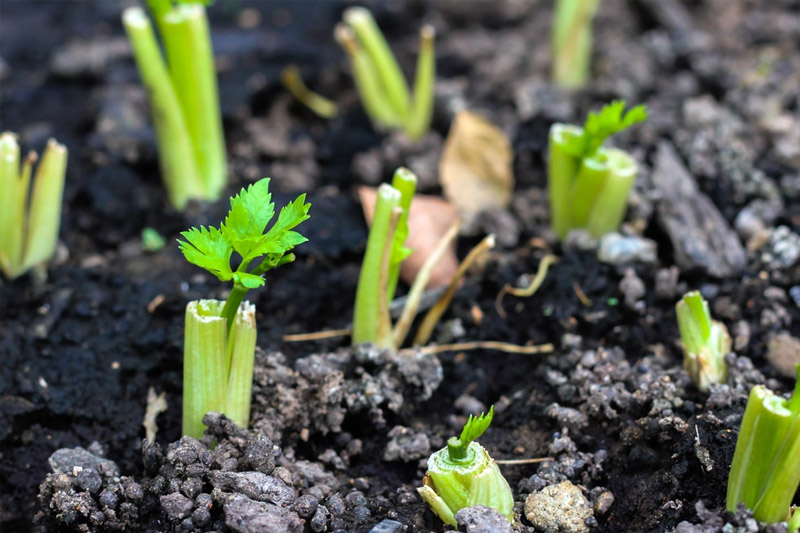
1. Sow to Grow Celery from Seeds
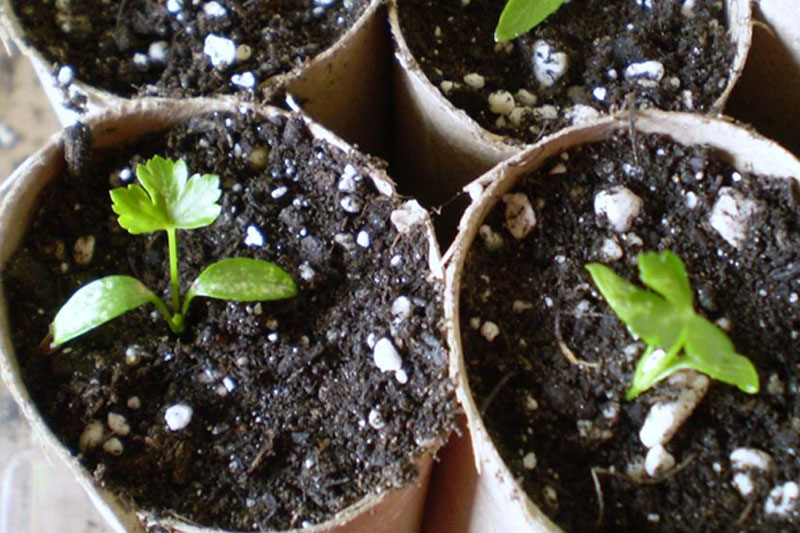
Celery can be sown under cover beginning in early April. Because the seeds are so small, you’ll need to sow with caution and a careful eye. Fill pots or seed flats halfway with a good-quality seed starting mix, then gently firm it even. The simplest method is to carefully tap the packet above the surface of the potting mix and watch the seeds fall. Ideally, they should be roughly an inch (2cm) apart. When you’re finished, press the seeds into position.
Because the seeds require light to germinate, cover them with only the thinnest layer of potting soil or vermiculite. This will help to keep moisture around the seeds from drying out. Water from below, then remove pots after moisture is visible at the top.
To germinate, celery seeds require mild temperature. If it’s still cold outside, place them in a propagator set to around 60oF (15oC), though an indoor windowsill would suffice. Because germination is sluggish and can take up to three weeks, you must remain patient. When they’re big enough to handle, move them into plug trays or, to buy you some time, into their own pots.
2. Plant
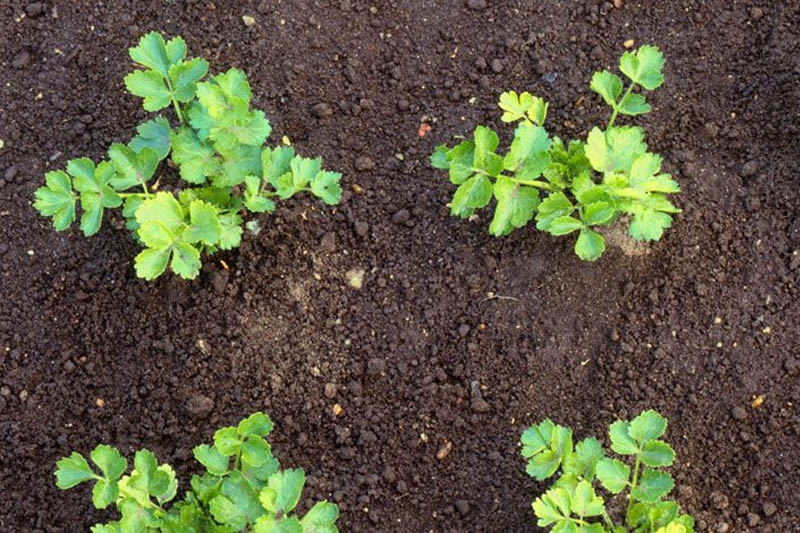
Celery prefers fertile soil that has been amended with plenty of compost or well-rotted manure. Because wild celery thrives in bogs, you’ll need to provide continuous hydration for this thirsty vegetable, while a sunny location should promote good, even growth.
Two weeks before planting, start acclimating celery to the outdoors. Simply leave your plants outside for a longer period of time each day, taking care to bring them inside if frost threatens. Plant them after the last anticipated frost date. This is significant because a quick cold spell might force plants to bolt (flower prematurely) before they are ready to harvest. If you missed the window for sowing, garden centres often have ready-to-plant celery.
Plant self-blanching varieties in a row nine inches (23cm) apart in both directions. Planting them thus close together will provide a lot of shade between them, allowing the stems to blanch. Trenches should be about a foot (30cm) apart and a foot (30cm) deep to plant trenching types.
3. Growing
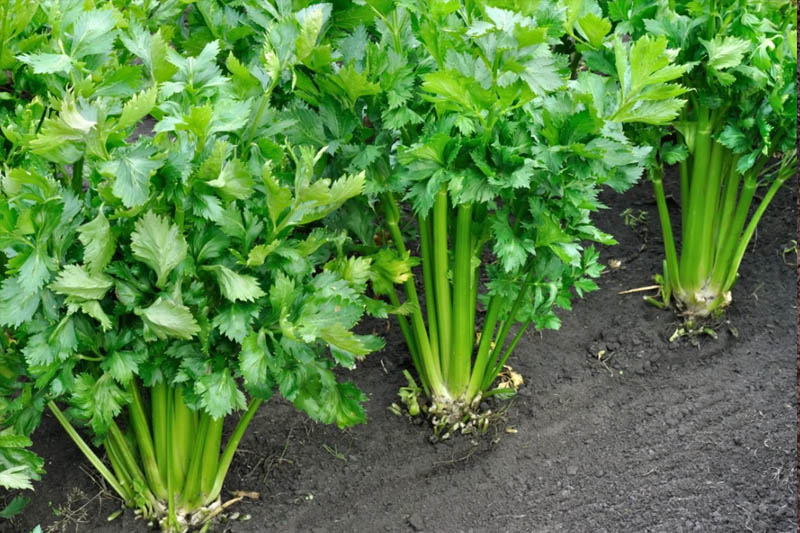
Once planted, the most important responsibility is to maintain celery well-watered at all times to prevent the possibility of plants bolting or stringy stems. As plants are established, use a nutrient-rich organic fertiliser to help them grow. Comfrey pellets, as well as coffee grounds poked into the soil between plants, are excellent. You might also place organic matter mulch, such as compost, between your plants. This will keep the roots cool, aid to nourish your plants, and retain soil moisture.
Once the stems reach approximately a foot (30cm) tall, begin earthing up trenching variety, banking the dirt up by about three inches (8cm) each time until you can no longer hill up any more. Celery is relatively trouble-free, but keep an eye out for slugs early on. Slugs will be enticed away from young plants by beer traps, and the poor victims can be disposed of as needed.
4. Harvest
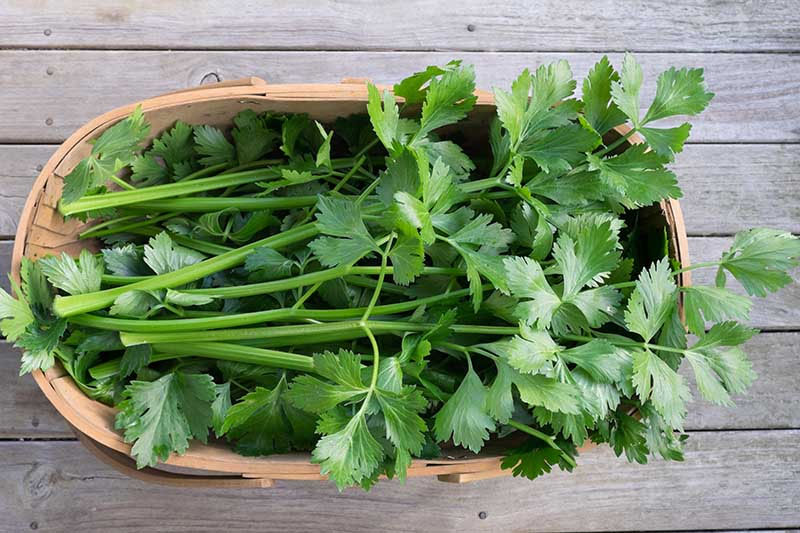
Harvest celery in the summer and fall until the first heavy frosts limit growth. Celery may overwinter in milder climates, forming sporadic stalks throughout the coldest months before springing up again in April and finally stretching to flower. Them can be harvested whole, however trimming or plucking individual stems as needed will keep plants growing for a longer length of time.
Also Read: How to Grow Potatoes in a Bucket?
